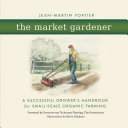Understanding and fostering soil carbon sequestration
About this ebook
Soils are known to be an enormous reservoir of carbon and represent an important and dynamic part of the global carbon cycle. However, this reservoir is under constant threat due to a combination of issues, including mismanagement, climate change and intensive agricultural production which has led to depletion of soil organic carbon.
Understanding and fostering soil carbon sequestration reviews the wealth of research on important aspects of soil carbon sequestration, including its potential in mitigating and adapting to climate change and improving global food security. The collection explores our understanding of carbon sequestration in soils, detailing the mechanisms and abiotic factors that can affect the process, as well as the socioeconomic, legal and policy issues that can arise as a result of this use.
In its extensive exploration of soil carbon cycling and capture, the book highlights how an informed understanding of carbon sequestration in a variety of soil types can contribute to achieving a more sustainable agriculture, as well as the methods which can be implemented by farmers to optimise the process of fostering carbon in soils.
About the author
Dr Cornelia Rumpel is Director of Research in the Institute of Ecology and Environmental Sciences at the French National Research Center (CNRS) located at Sorbonne University, where she leads a team investigating the fate of organic matter in natural and managed terrestrial ecosystems, including the mechanisms determining soil organic carbon sequestration. Her work deals with temperate and tropical environments and has contributed to the change of several paradigms in this important area. She is also working with industry and at the science policy interphase providing expertise in the areas of land management and climate change.
Dr Matthias Kuhnert is an environmental modeller, with a wide range of experience in using data from different scales. His recent focus was on simulations of greenhouse gas emissions and soil organic carbon changes in croplands, impacts of data aggregation on model results and the development of measuring, reporting and verification systems for soil organic carbon.
Dr. Alan Franzluebbers is a Research Ecologist with the USDA-Agricultural Research Service on the campus of North Carolina State University in Raleigh NC. He has more than 30 years of research experience starting with a master’s program in Nebraska, PhD in Texas, post-doctoral position in Alberta Canada, and as a full-time soil scientist in Georgia and now in North Carolina. He currently serves on the Board of Directors for the American Forage and Grassland Council and served in the past on the Board of Directors for the Soil Science Society of America. He is a Fellow of the American Society of Agronomy and the Soil Science Society of America.
Lydie-Stella Koutika is a soil scientist working at Research Centre on Productivity and Sustainability of Industrial Plantations (CRDPI) at Pointe-Noire, Republic of the Congo. She is a member of Scientific and Technical Committee (STC) of the ‘4 per 1000’ “Soils for food security and climate Initiative” since 2016. She is a laureate of ‘African Union Kwame Nkrumah Regional Scientific Award for Women’ (2014) and The World Academy of Science (TWAS) -Al-Kharafi Prize (2018). She has published >45 peer-reviewed journal papers and some book chapters.
Dr Iñigo Virto is an Assistant Professor at the Universidad Pública de Navarra (UPNA), Spain. He teaches in the field of Soil Science, Earth Sciences and Environmental Sciences at UPNA, and teaches MA courses at Universitat de Lleida, Spain and at AgroParisTech and AgroCampus Ouest (France). Dr Virto is Associate Editor of the Journal of Plant Nutrition and Soil Science and serves as Deputy Head for Internationalization at the College of Agricultural Engineering and Biosciences.
Siân Mooney is the fifth dean of the Indiana University Paul H. O’Neill School of Public and Environmental Affairs. Her research interests lie in questions related to the use of natural resources and the environment. She is an economist that has worked for many years on topics related to water use in the western United States, endangered species and the impacts of climate change, and producer incentives to engage in soil carbon sequestration. She is also interested in the incentives that scientists face to address complex problems as part of multidisciplinary teams and the role of science information in decision-making.
Dr Alexandra Langlais is a member of several scientific research networks, including the International Academy of Environmental law, as well as the French Society of Environmental Law in which she is President of the Western section. Dr Langlais has also been involved in several national and European research programmes, such as Agriconnect, Alterphyto and Normasoil.







